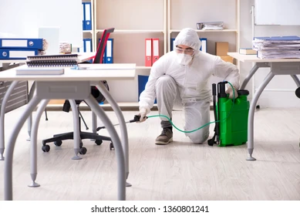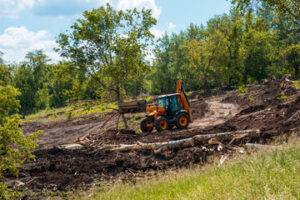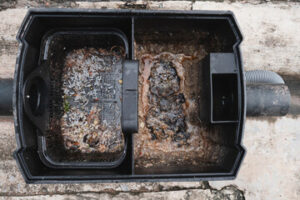Exterminator Springfield MO is a professional who helps identify and treat pest infestations. They may also work to prevent pests from entering buildings or contaminating food.
Some exterminators also use mechanical devices to remove pests, such as pheromone traps and insect growth regulators. They also keep detailed records of inspections and treatments.

An exterminator’s job is to rid homes and businesses of pests that cause problems for the owners. They are trained to use various methods to eliminate unwanted intruders, including chemical sprays and bait traps. They also keep detailed records of their work, which can help with long-term pest control and regulatory compliance. They must also follow safety protocols when working with hazardous chemicals.
They must have an in-depth knowledge of how to treat a wide variety of pests, including rodents, birds, bees, flies, ticks, and mosquitoes. They should also be able to determine how to prevent infestations from occurring in the first place. This may include identifying possible entry points and examining the surrounding environment to see if there are any environmental issues that could contribute to the problem.
It’s important for an exterminator to be professional because their duties are incredibly important to people’s well-being and livelihood. They are tasked with protecting families, businesses, and restaurants from disease-causing pathogens that can be spread by insects and rodents. Many of these unwanted pests are known to carry harmful bacteria, viruses, and parasites, which can lead to infections and diseases like malaria, dengue fever, encephalitis, chikungunya, and the plague.
Exterminators are often hired to treat homes and businesses, but they also serve a vital function in the agricultural industry by controlling pest populations that can damage crops. They can also be used to protect livestock from diseases such as rabies, bovine tuberculosis, and herpes B. They can be found in a wide range of settings, from hospitals to retail stores, and they must be able to communicate effectively with a diverse population of clients.
Exterminators are usually hired when a homeowner or business is experiencing an urgent issue, such as ants marching across their kitchen counter or a mouse running around the office. They use strong chemicals to kill the pests in a quick and effective manner, but these treatments are temporary solutions that rarely come with any type of guarantee. In contrast, pest management professionals use Integrated Pest Management to discover why the pests are invading and alter the conditions that attract them.
Safety
An exterminator is an expert who can help you reclaim your home or office from pests like ants, spiders, rodents, fleas, and bees. They can also provide advice on how to prevent pest infestations in the future. They work in both residential and commercial settings, and may need to climb or crawl into tight spaces.
They often use dangerous chemicals in their treatment, so it’s important to follow their safety instructions carefully. This can include wearing rubber gloves, a face mask, and protective clothing. They may also ask you to stay out of the affected area for a few hours up to a day, depending on the type of treatment they use.
Exterminators must also keep detailed records of all their inspections and treatments, as well as any precautionary measures they take. This includes documentation of the type of chemicals used and their concentration levels. They should also note any areas that must be sealed or covered. They should also have a clear understanding of the pests they’re targeting and how to best control them.
If you find signs of a pest problem, such as unusual smells or droppings, it’s important to contact an exterminator immediately. They’ll inspect the area and recommend a plan of action to remove the pests. They’ll also work with you to prevent future pest problems by advising you on landscaping tactics, cleaning strategies, and how to store food properly.
An exterminator uses strong chemicals to kill pests, but they aren’t a permanent solution. The pests will likely return unless you change your lifestyle and prevent them from entering your property in the first place. Pest control experts recognize this and offer long-term solutions rather than simply treating the symptoms of the pests.
Exterminators are realistic individuals who enjoy tasks that are tactile, physical, athletic, or mechanical. They’re independent and persistent and tend to be practical and thrifty. They’re good at identifying and solving problems, and prefer to avoid confrontation. If you’re looking for a career that’s challenging but rewarding, an exterminator may be the perfect fit for you.
Knowledge
A career as an exterminator is an ideal choice for individuals who have a strong work ethic and are good at following instructions. In addition to being knowledgeable about pests and their habits, exterminators must have excellent attention to detail. They also need to know how to identify signs of infestation and locate possible entry points into buildings and structures. This requires a keen eye for spotting even the tiniest clues of an unwanted intruder.
The work of an exterminator can vary greatly, depending on the type of pest they’re dealing with. Some specialize in insect extermination, while others focus on rodent control or termite treatment. Some even provide a variety of services, including sanitation and structural repair. They may use different types of chemicals and pesticides, as well as traps and baits, to treat a specific pest problem.
Whether they’re working with insects, rodents, or birds, an exterminator is trained to recognize and remove pests from homes, commercial properties, and public spaces. They are also skilled at developing treatment plans and implementing them. In addition, they must be able to keep detailed records of the services provided to their clients. This information is important for ongoing pest management and regulatory compliance.
Aside from the technical knowledge required for this job, an exterminator needs to have a strong business sense and be able to communicate effectively. They must be able to understand their client’s problems and offer advice on how to prevent future pest infestations. They must also be able to complete accurate and timely financial transactions.
Although not required in all states, obtaining professional credentials is a great way to demonstrate your expertise as an exterminator. These credentials are available through professional associations and state pesticide regulatory agencies. For example, the Certified Pest Control Technician credential is available for those who have completed training and passed an exam. This credential demonstrates your ability to manage pest control operations, comply with regulations, and ensure the safety of customers and employees.
In addition to their knowledge of pests and their behavior, exterminators must have extensive knowledge of the various methods used to eradicate them. This includes pesticides, traps and baits, heat treatments, and fumigation. In addition, they should be aware of any alternative non-toxic methods that can be used to treat a particular pest infestation.
Cost
The cost of an exterminator’s services can vary greatly depending on the type and severity of pest infestation. Exterminators can help prevent and control infestations using a variety of techniques, including chemical treatments, traps, and exclusion techniques. They may also offer long-term prevention methods such as sealing entry points and reducing food sources. Exterminators often work in residential and commercial environments. They can also provide inspections for real estate transactions and perform termite inspections.
A general pest control treatment for a house typically costs around $300. This includes a thorough inspection and the use of traps, baits, and other pesticides to kill pests. This type of treatment is typically sufficient for most homes, but more severe infestations may require additional pest control products or services.
Some pests, such as termites and bed bugs, can be difficult to eliminate. In addition to pesticides, an exterminator may need to install wood barriers and seal entry points to prevent future infestations. In these cases, the cost of an exterminator’s services may be significantly higher.
Another factor that influences the cost of an exterminator’s service is the location of the property. In some areas, the climate is more conducive to certain pests, and it’s more common for people to experience problems with rodents than in other parts of the country. In addition, some areas are more densely populated, and this can lead to more competition for the services of an exterminator.
Other pests, such as spiders and silverfish, may not be as dangerous, but they can cause damage to your home and food supplies. An exterminator can remove these pests with insecticides or a general perimeter treatment, and these services typically cost less than treating for other types of pests.
Other services that exterminators offer include removing wild animals from the property and relocating them back into the wilderness. These services usually cost more than those for household pests, but they can be useful if you live in an area that’s susceptible to wildlife. For example, you might want to hire an exterminator to remove raccoons or bobcats from your home before selling it.








